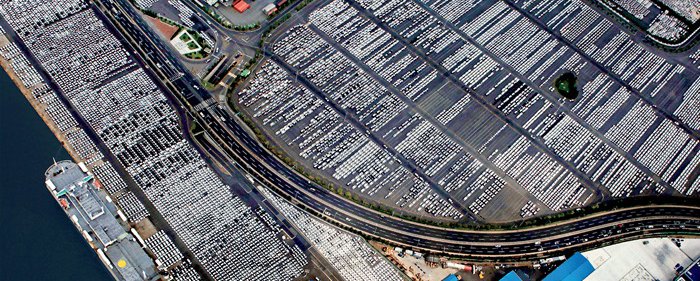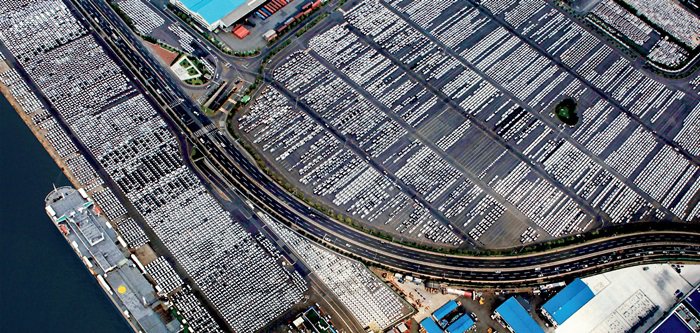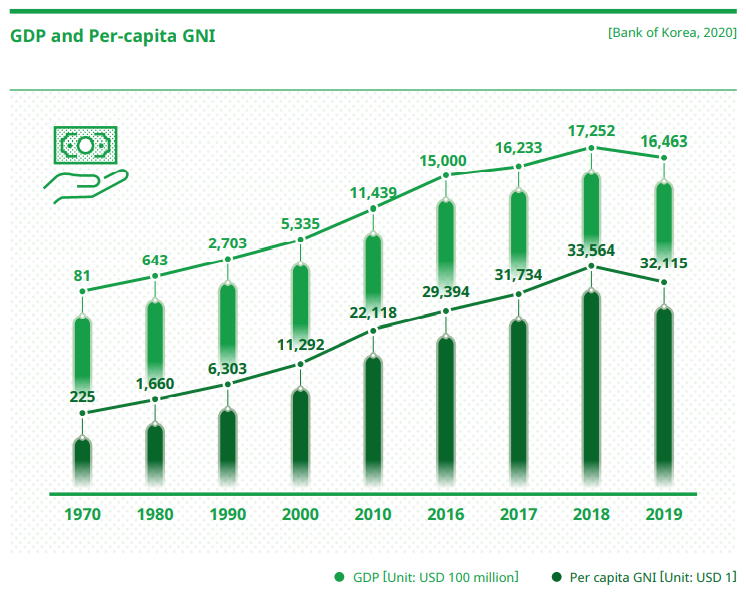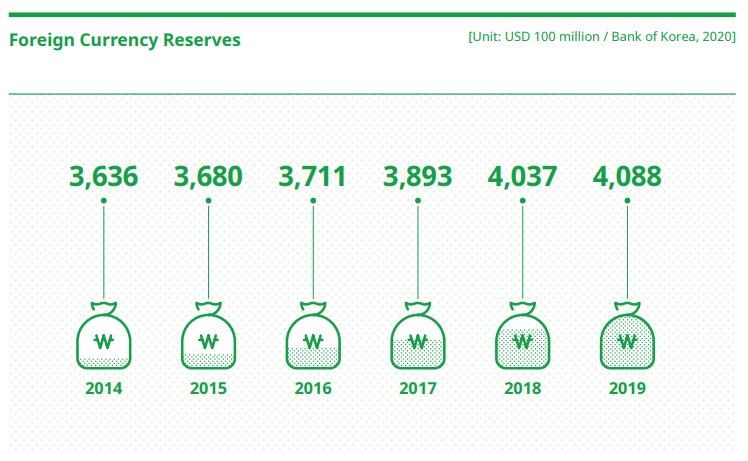The Korean Economy – the Miracle on the Hangang River

The Korean Economy – the Miracle on the Hangang River
South Korea has achieved rapid growth in a short period. The country has displayed global competitiveness in various fields such as mobile phones, semiconductors, automobiles, chemicals, and steelmaking. In recent years, its cultural content, including music, gaming, and webtoons, is emerging as an essential industry in itself, taking the lead in the Korean economy.

The Constitution of South Korea stipulates that “the right of property of all citizens shall be guaranteed.” In other words, South Korea is based on a market economy, and thus it allows individuals and businesses to freely conduct economic activities and guarantees their profits and properties.
However, the Constitution does not guarantee the limitless, unfettered pursuit of capitalistic free economy. The Constitution stipulates that an unjust situation shall be rectified if the abuse of capital is found to cause damage to people. This serves as a minimal mechanism to improve issues relating to the free market economy.
South Korea has achieved economic growth at an unprecedented speed. Observers called what the country has accomplished the “Miracle on the Hangang River”, as most of the country’s industrial facilities were destroyed during the three-year-long Korean War, and the country was devoid of capital and natural resources.
In the early 1960s, the country pushed ahead with export-oriented economic development plans. At first, the country’s major export items were mainly light industrial products manufactured in small factories, or raw materials. In the 1970s, the country invested in heavy chemical facilities and laid the basis for the export of heavy industrial products. The country is now leading the semiconductor and display sectors.
Hosting the 1988 Summer Olympic Games, commonly known as Seoul 1988, provided the country with the momentum to join the ranks of semi-advanced countries. The overseas mass media called South Korea one of the four Asian tigers along with Taiwan, Singapore, and Hong Kong. In December 1996, the country became the 29th member country of the OECD, which is largely composed of advanced countries.
South Korea’s exports, which amounted to only USD 32.82 million in 1960, surpassed the USD 10 billion mark in 1977 and reached USD 542.2 billion in 2019. The country’s GNI per capita was a paltry USD 67 in 1953 around when the government was established, yet rapidly increased to USD 32,115 in 2019.

South Korea established an export-oriented economic structure centered on large businesses while pursuing growth in the face of insufficient capital and resources. This led conglomerates to dominate industry, making the economic structure heavily reliant on exports and imports, thus leaving the country susceptible to external economic conditions.
In November 1997, a foreign exchange crisis hit the country, forcing it to turn to the IMF for a bailout. It was the first ordeal the country had to confront after years of rapid economic growth. The country took the drastic step to drive insolvent businesses out of the market and then pushed ahead with industrial restructuring. In only two years, the country regained its previous growth rate and price levels as well as a current account balance surplus. In the process, some 3.5 million people joined in the campaign to collect gold to help the government repay the fund borrowed from the IMF. A total of 227 tons of gold were collected. The world marveled at the South Koran people’s voluntary participation in the determined effort to repay its national debts.
While making concerted efforts to extricate itself from the foreign exchange crisis, the country benefitted from certain ancillary effects such as the adoption of the globalized economic and financial systems. However, the restructuring process also had side effects such as the government’s increased fiscal expenditure and higher income inequality.
After overcoming the economic crisis, the South Korean economy continued to record solid growth. The country’s GDP more than tripled from USD 504.6 billion in 2001 to USD 1,646.3 billion in 2019, the 12th largest total in the world. In fact, during the period 2008–2010, when most parts of the world were experiencing the devastating financial crisis, the country recorded an outstanding economic growth rate of 6.3%. The world’s major international news outlets referred to the economic accomplishment as a “textbook recovery.”

By 2010, South Korea had emerged as the world’s 7th largest exporting country. From 2011 to 2014, the country’s trade performance amounted to over USD 1 trillion for four consecutive years. The trade volume retreated slightly in 2015 and 2016 but rebounded to USD 1 trillion in 2017. South Korea’s foreign currency reserves amounted to USD 408.8 billion in 2019, and its short-term foreign debt ratio stood at 32.9% as of 2019, which sits around the middle range among G20 countries. The country’s sovereign credit rating has been at a stable level.
